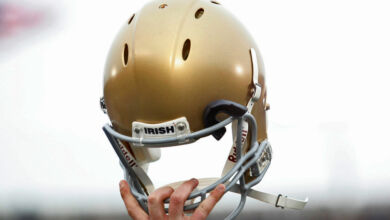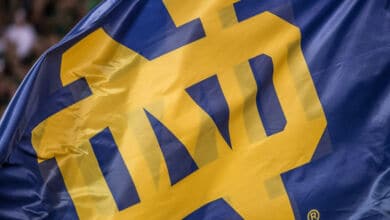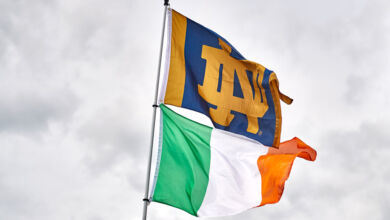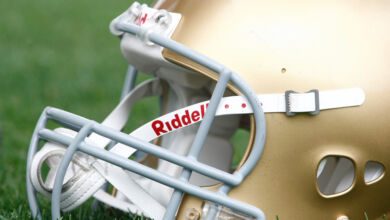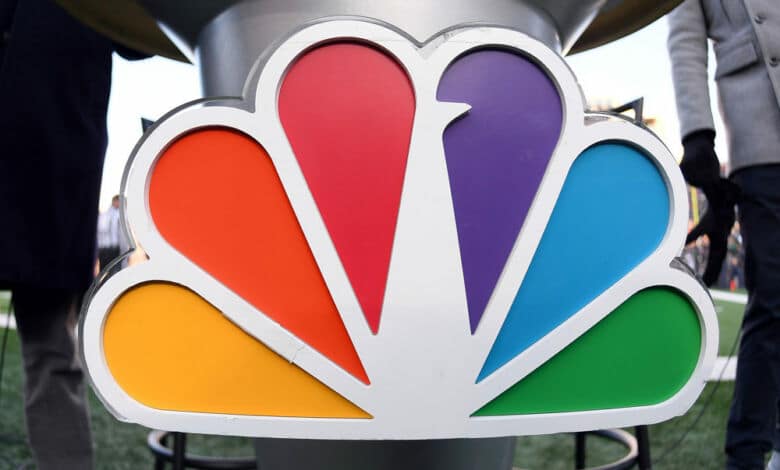
For over three decades, watching Notre Dame Fighting Irish home games on NBC has developed into a tradition that began with the original $30 million, five-year deal. That exclusive media marriage, first agreed upon in February 1990, began on Sept. 7, 1991, with a season-opening 49-27 win over an in-state opponent, the Indiana Hoosiers.
The two schools hadn’t met since 1958, with the return of the long-dormant matchup presenting the seventh-ranked Irish as nearly 20-point favorites in the contest. Notre Dame again had designs on challenging for a national title, in contrast to the unranked Hoosiers, who were coming off a 6-5-1 season in 1990.
The Coaches
Season number six with the Irish for Lou Holtz began with the problem of trying to replace offensive superstar Rocket Ismail. In addition, there was the challenge of fixing some holes in the secondary and developing depth on both sides of the line. In his first five years, Holtz had compiled a 46-14 record, with one national championship in 1988.
Bill Mallory was entering his eighth season as head coach at Indiana, with his 37-42-2 record at the school requiring some context. That’s because he took over a floundering program that went 0-11 in his first season in 1984. Since then, he’d taken the Hoosiers to four bowl games, including a second trip to the Peach Bowl the year before.
The Key Players
Rick Mirer’s status for the game for Notre Dame became a question after he was arrested one week before the game for public intoxication and disorderly conduct. However, the charges were dropped, allowing him to focus on the season ahead. A returning option at running back was Rodney Culver, with receivers that included tight end Derek Brown and a potential breakout star in Willie Clark. On defense, linebacker Demetrius DuBose also escaped the same charges as Mirer and was looked upon as a key part of this unit.
Trent Green had a major weapon in the backfield in Vaughn Dunbar, who gained nearly 1,143 yards rushing during his first season with the Hoosiers the year before. Two throwing considerations for Green other than Dunbar were wideouts Eddie Thomas and Thomas Lewis. The Indiana defense had linebackers Mark Hagen and Greg Farrall as the cornerstones.
The Game
Getting the Irish offense going took some time, with the Hoosiers putting the first points on the board on a 48-yard field goal midway through the first quarter. That would be the first of five lead changes during the opening half. Notre Dame’s first lead came slightly over two minutes later when DuBose ran nearly untouched on a pick-six from the Indiana 49 to make it a 7-3 game.
In their next series. the Irish were in a position to extend their lead but Craig Hentrich missed on a 38-yard field goal attempt. The Hoosiers then put together a 79-yard drive that methodically picked up five first downs along the way. On the series’ eighth play, Green ran it in from the five to give Indiana the lead back at 10-7. Green’s run came after Hoosier running back Brett Law had picked up 27 yards on a pair of runs.
Needing less than three minutes to drive virtually the same distance, the Irish grabbed the lead again at 14-10 when Culver scampered 19 yards for the go-ahead score. One of the five first downs on the nine-play drive was a clutch effort by Tony Brooks, who managed to break a pair of tackles to move the chains to the Indiana 30.
The Hoosiers responded with what turned out to be their final go-ahead score of the afternoon.. Green drove his team from their own 20, connecting four times through the air for 60 yards during the advance. He once again took matters into his own hands by getting into the end zone on a one-yard sneak to make it 17-14.
In the final 5:26 before halftime, Notre Dame shifted the momentum with two touchdowns over the course of just 26 seconds. The first came when Mirer found a hole in the Indiana defense and raced 47 yards for the score. A key facet of that dash was wide receiver Adrian Jarrell’s block that opened the field for Mirer.
Then, after a roughing the kicker penalty on the point-after attempt, the Irish kicked off from midfield. Notre Dame managed to successfully recover an onside kick attempt, taking over at the Hoosier 41 and needing just two plays to score again. A 28-yard pass from Mirer to Tony Smith was followed by a 13-yard run by Tony Brooks, allowing the Irish to take a 28-17 lead into the break.
Indiana chipped away three points from their deficit with a 29-yard field goal but Notre Dame managed to build an even larger lead by moving 69 yards on 12 plays for another touchdown. A pair of passes from Mirer to Lake Dawson and Brown, respectively, gained a combined 38 yards and helped to set up Mirer’s six-yard scoring run.
The Irish’s next score became one that is still replayed because of the sheer determination of Brown’s backup, Irv Smith. The drive had been set up by a Rod Smith interception, with Mirer finding Smith at the Indiana 25, From there. Smith dragged an eventual four Hoosiers into the end zone for a 58-yard score and a 42-20 Notre Dame lead. It’s a play that has lived on in Irish lore ever since.
Indiana scored for the final time in the first minute of the fourth quarter. However, the Irish ended any hope of a dramatic comeback with a nine-play, 75-yard drive that was largely fueled by the running of Jerome Bettis, who gained 61 yards on just two runs.
The Aftermath
The Hoosiers ended up finishing the year with a 7-4-1 record, winning all five of their home games. That led to a berth in the Copper Bowl, where they shut out the Baylor Bears, 24-0
Regarding the title hopes of Notre Dame in 1991, those took a hit just one week later when they fell at Michigan in a 24-14 loss. They then officially died two months later following consecutive losses to Tennessee and Penn State, which led to grumbling about the Irish getting a Sugar Bowl berth. That, in turn, helped spark the Cheerios Bowl controversy, which Notre Dame used to spring a 39-28 upset of the Florida Gators.
Since that 1991 game, the two schools have not faced each other, despite being just 200 miles apart. That may just as well, given the Irish’s 23-4-1 lead in the all-time series.
